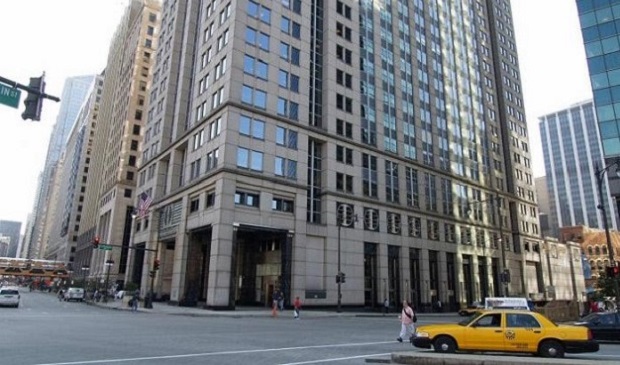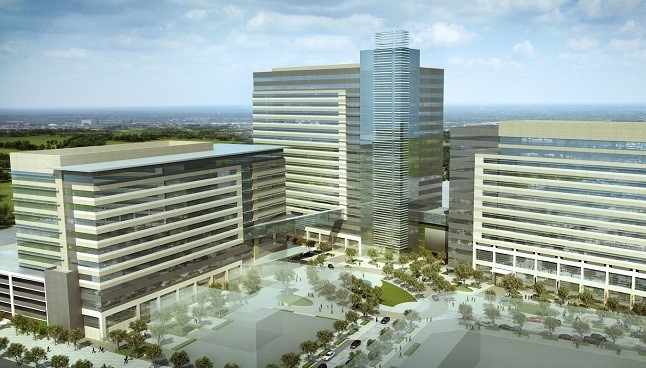
CHICAGO—The presidential election may have caused some uncertainty on the future direction of the US, but the market for US commercial real estate remains appealing for many foreign investors. One group in particular seems likely to continue buying up properties at a robust pace: Asian investors. And among the powerhouses from that region, South Koreans now standout both for their aggression and discipline.
According to Chicago-based JLL's new US Investment Outlook, Asian investors spent $16.8 billion on US assets in 2016, or 34.6% of all offshore acquisitions. About 97% of that activity came from China, Singapore, South Korea, Japan and Hong Kong.
“It's incredible to see the marked shift in Asian inbound capital,” says Lucy Fletcher, a managing director with JLL's Global Capital Markets. “Whereas these top Asian countries accounted for just five percent of total inbound investment on average from 2004 through 2007, now they account for 33.5%.”
South Koreans began making major US purchases in 2009. Since then, South Korean investors, mainly life insurance companies and pension funds, have concentrated on buying up class A office assets in core cities.
“These investors are under pressure to diversify, and they see US real estate as a way to do that outside of stocks and bonds,” Miyeon Lee, the Seoul-based director of JLL's Asia Pacific Capital Markets team, tells GlobeSt.com.
Major deals by South Korean investors include the 2013 purchase of Chicago's 225 W. Wacker Dr. Seoul-based Mirae Asset Global Investments Co. bought the 31-story tower for $218 million.
But the pressure to diversify that originally brought the Koreans to the US has also further broadened their geographic focus. Instead of focusing exclusively on the gateway markets, secondary cities with solid job growth and improving demographics now have a chance of attracting Korean interest.

“The markets we expect South Korean investors to target are Denver, Atlanta, Houston and Dallas,” says Lee. “As long as the profile fits Korean investors' investment requirement, they are not afraid to go explore other secondary markets.”
In 2016, for example, Mirae joined with Houston-based Transwestern Investment Group to purchase State Farm Insurance's new four-tower office campus in Richardson, TX, a Dallas suburb, for about $800 million.
Nearly two-thirds of South Korean real estate investment goes to the US and 65% of that goes into office buildings, according to JLL. And these investors have adopted a very disciplined approach. Seventy percent of their total investment comes in the form of debt. Ironically, although they are very committed to the US market, according to Lee it was their experience here during the last cycle which led to the current strategy.
“In 2007 a number of pension funds invested into the residential development in Manhattan and had equity wiped out,” she says. “Since then, most Korean investors have become super cautious on any development projects overseas. However, debt financing in development projects is widely viewed as a safe bet so they have been very active in that sector.”
“Debt deals are faster and have the potential for quicker returns, and office has become the preferred asset class thanks to its relative overall stability and availability,” she adds. “Investors typically look for class A assets with long leases and credit tenants.”
Still, the remarkable strength of the US industrial market has made it a favorite among many overseas investors, and Lee believes the Koreans may also begin to get involved. “So far, the industrial sector is relatively new to Korean investors. Some have invested through funds indirectly, but recently, there is more interest in the sector as it provides a way to diversify away from traditional office investments.”
And concerns over a new administration have not dampened sentiment about the US. “We haven't seen an immediate reaction to the election, but people will be watching closely. Regardless, the main focus for Korean investors will remain on the US as we move forward.”

CHICAGO—The presidential election may have caused some uncertainty on the future direction of the US, but the market for US commercial real estate remains appealing for many foreign investors. One group in particular seems likely to continue buying up properties at a robust pace: Asian investors. And among the powerhouses from that region, South Koreans now standout both for their aggression and discipline.
According to Chicago-based JLL's new US Investment Outlook, Asian investors spent $16.8 billion on US assets in 2016, or 34.6% of all offshore acquisitions. About 97% of that activity came from China, Singapore, South Korea, Japan and Hong Kong.
“It's incredible to see the marked shift in Asian inbound capital,” says Lucy Fletcher, a managing director with JLL's Global Capital Markets. “Whereas these top Asian countries accounted for just five percent of total inbound investment on average from 2004 through 2007, now they account for 33.5%.”
South Koreans began making major US purchases in 2009. Since then, South Korean investors, mainly life insurance companies and pension funds, have concentrated on buying up class A office assets in core cities.
“These investors are under pressure to diversify, and they see US real estate as a way to do that outside of stocks and bonds,” Miyeon Lee, the Seoul-based director of JLL's Asia Pacific Capital Markets team, tells GlobeSt.com.
Major deals by South Korean investors include the 2013 purchase of Chicago's 225 W. Wacker Dr. Seoul-based Mirae Asset Global Investments Co. bought the 31-story tower for $218 million.
But the pressure to diversify that originally brought the Koreans to the US has also further broadened their geographic focus. Instead of focusing exclusively on the gateway markets, secondary cities with solid job growth and improving demographics now have a chance of attracting Korean interest.

“The markets we expect South Korean investors to target are Denver, Atlanta, Houston and Dallas,” says Lee. “As long as the profile fits Korean investors' investment requirement, they are not afraid to go explore other secondary markets.”
In 2016, for example, Mirae joined with Houston-based Transwestern Investment Group to purchase
Nearly two-thirds of South Korean real estate investment goes to the US and 65% of that goes into office buildings, according to JLL. And these investors have adopted a very disciplined approach. Seventy percent of their total investment comes in the form of debt. Ironically, although they are very committed to the US market, according to Lee it was their experience here during the last cycle which led to the current strategy.
“In 2007 a number of pension funds invested into the residential development in Manhattan and had equity wiped out,” she says. “Since then, most Korean investors have become super cautious on any development projects overseas. However, debt financing in development projects is widely viewed as a safe bet so they have been very active in that sector.”
“Debt deals are faster and have the potential for quicker returns, and office has become the preferred asset class thanks to its relative overall stability and availability,” she adds. “Investors typically look for class A assets with long leases and credit tenants.”
Still, the remarkable strength of the US industrial market has made it a favorite among many overseas investors, and Lee believes the Koreans may also begin to get involved. “So far, the industrial sector is relatively new to Korean investors. Some have invested through funds indirectly, but recently, there is more interest in the sector as it provides a way to diversify away from traditional office investments.”
And concerns over a new administration have not dampened sentiment about the US. “We haven't seen an immediate reaction to the election, but people will be watching closely. Regardless, the main focus for Korean investors will remain on the US as we move forward.”
© 2025 ALM Global, LLC, All Rights Reserved. Request academic re-use from www.copyright.com. All other uses, submit a request to [email protected]. For more information visit Asset & Logo Licensing.






